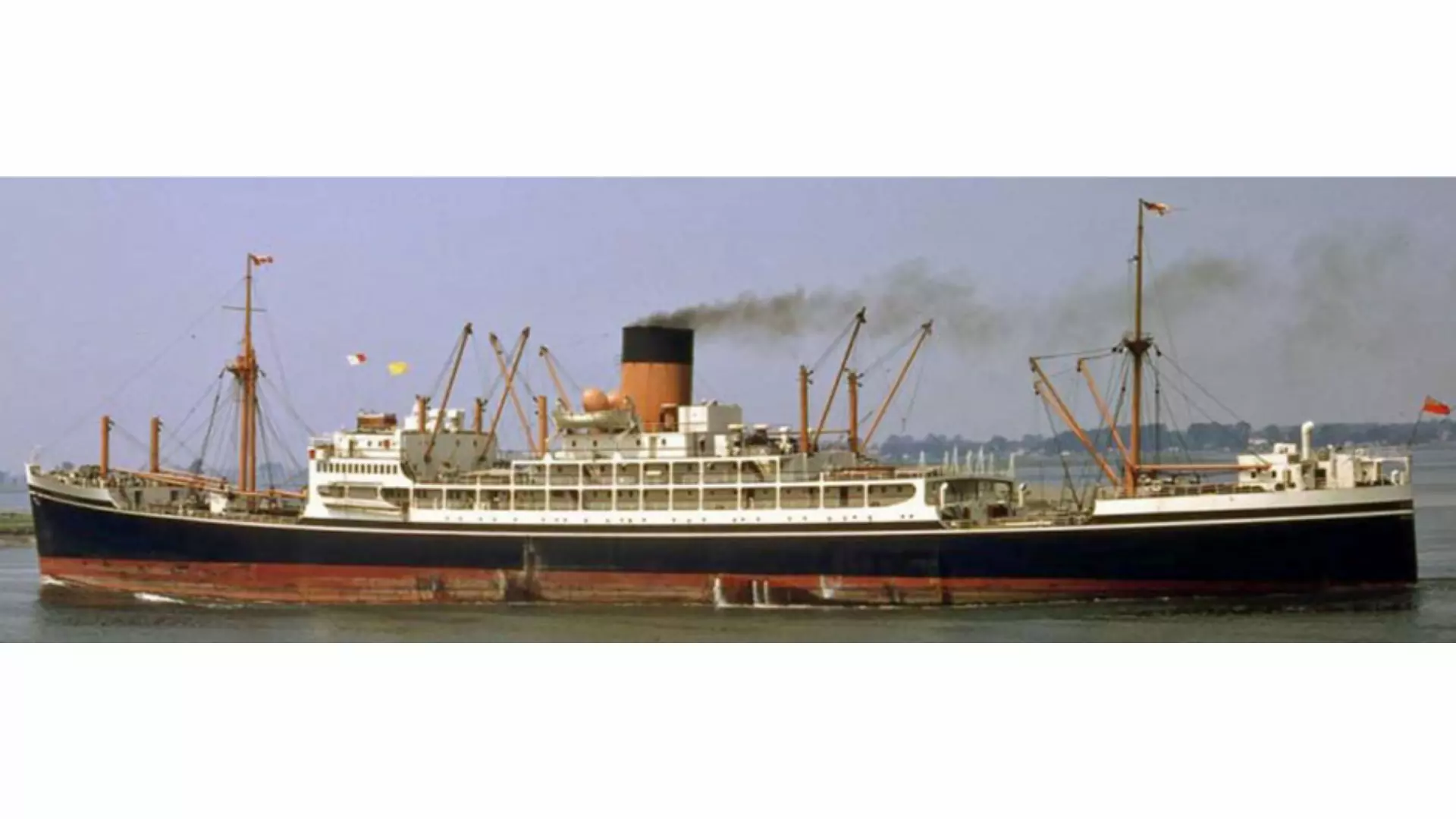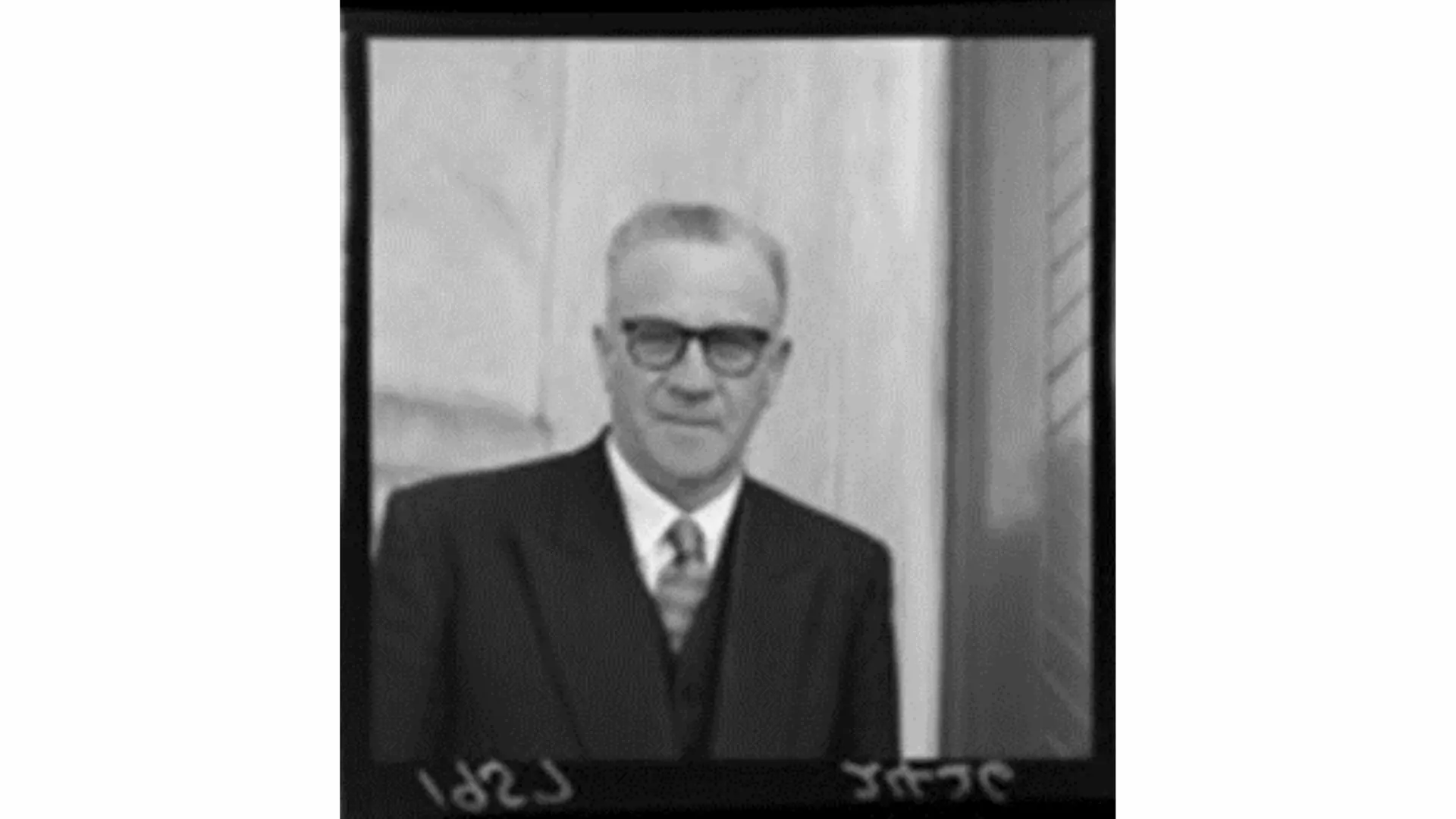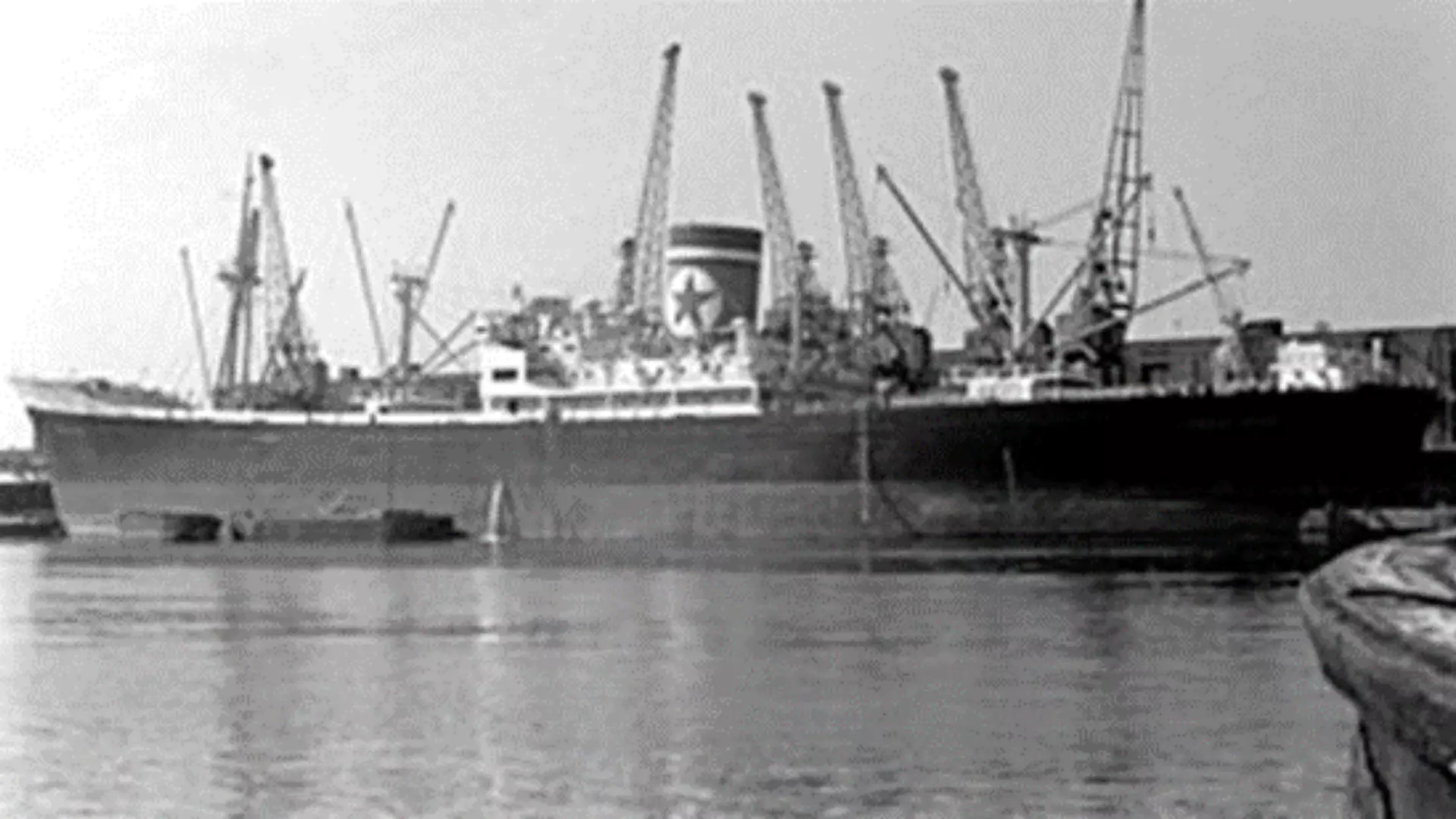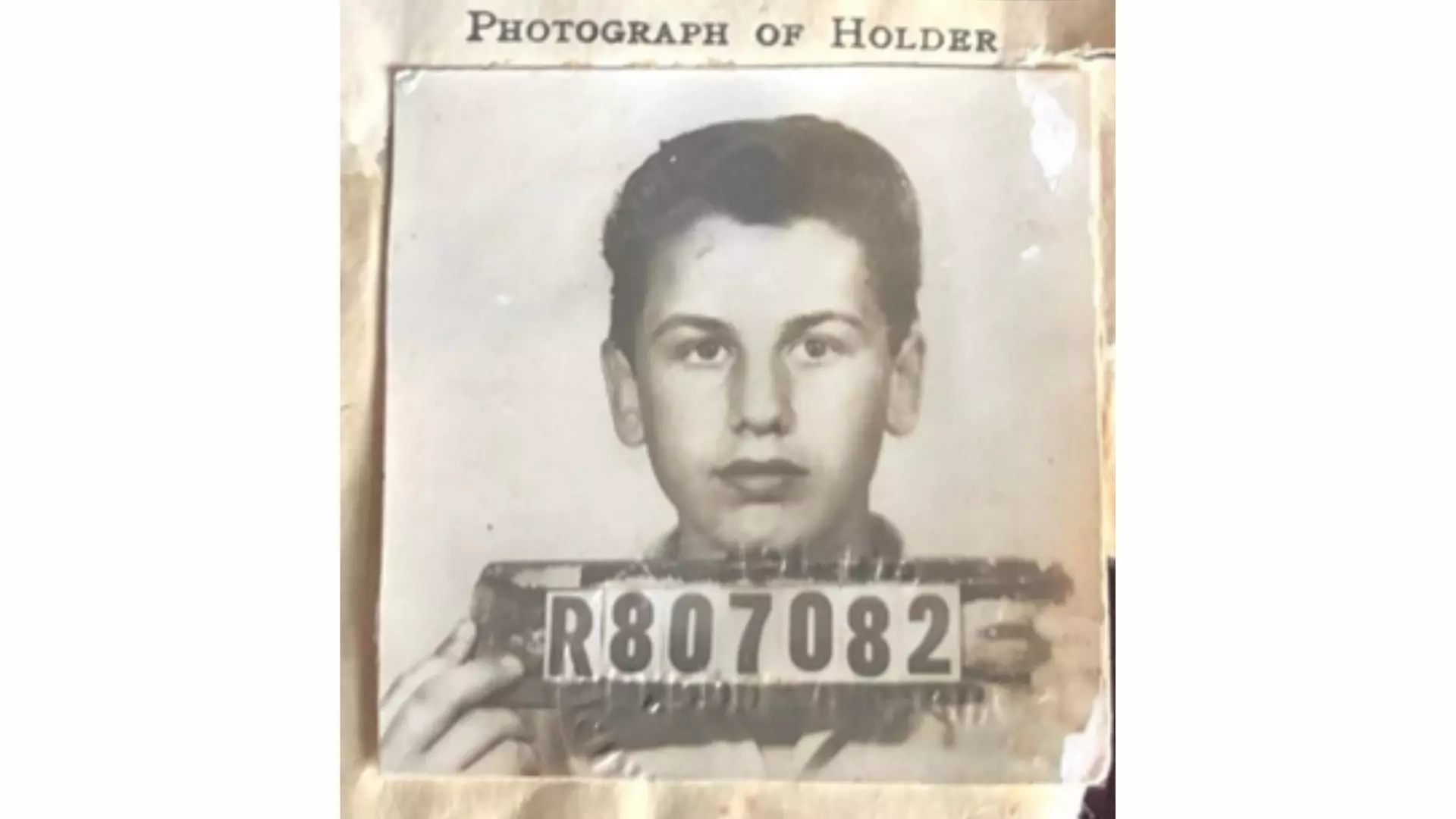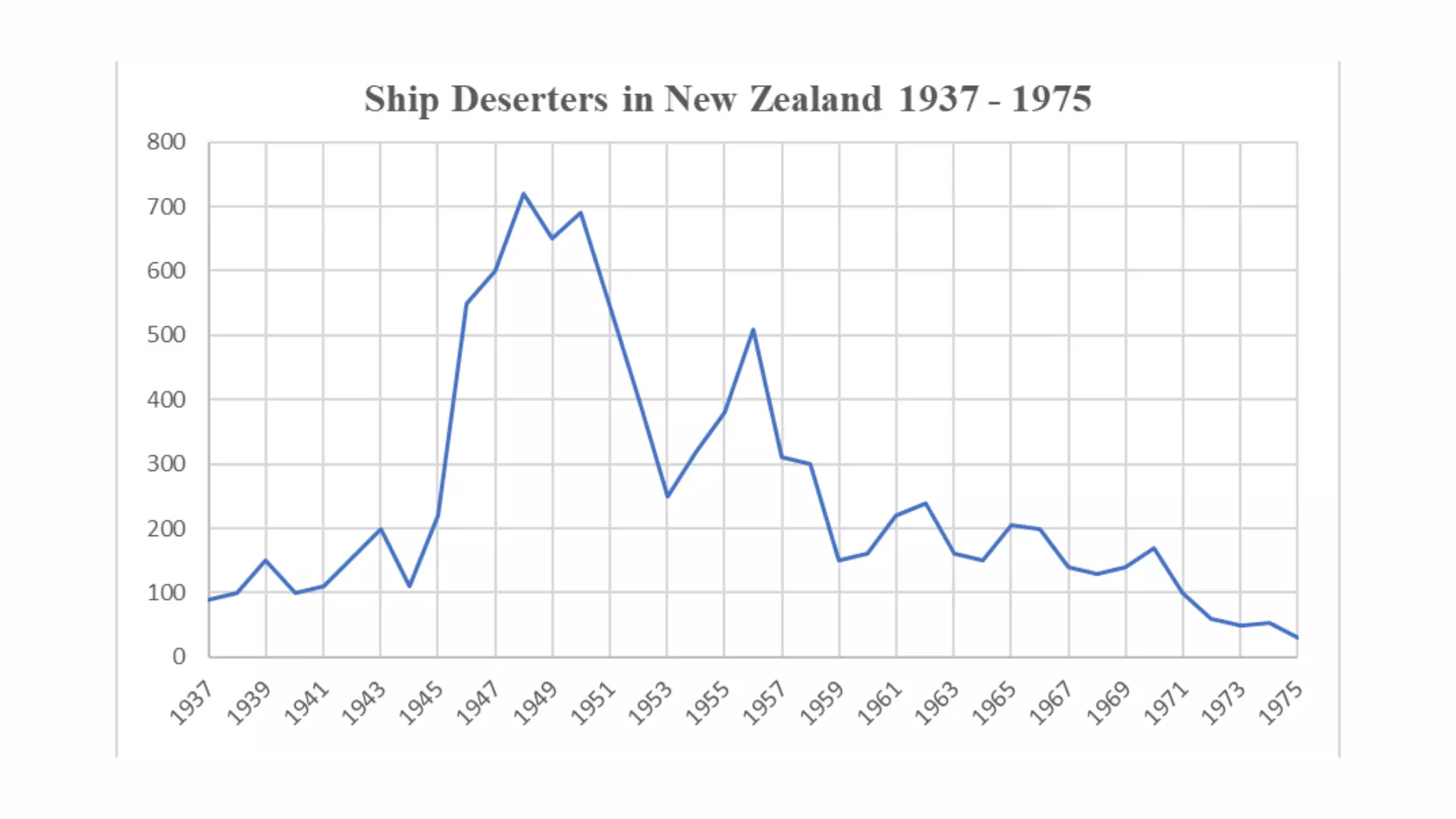The experiences of the ship jumpers Harry Clark, Mick Luckhurst, Ian, and Steve represent an untold chapter of Aotearoa’s European immigration history, one that focuses on the assisted schemes of the nineteenth century along with the mid-twentieth century immigrants from Britain—the ten-pound poms. Ship jumpers are absent from this narrative even though they leave behind a rich legacy with many remaining in New Zealand, while others returning after deportation.
Family lore tells us that Bristol-born Sid Adams, father of basketballer Steven Adams and his Olympic shotput champion sister Valerie, jumped ship in the Bay of Plenty. Tommy Adderley one of New Zealand’s early rock and roll stars jumped ship, as did Jimmy Woods and Peter Galt, prominent members of the New Zealand Seamen’s Union. British actor Gareth Hunt of Upstairs Downstairs and New Avengers fame jumped ship, then worked in an Upper Hutt car factory before being imprisoned and deported.
Many seafarers found the desire to emigrate so strong that they became criminals by jumping ship. It is time for them to be embraced as part of Aotearoa’s history, and to be regarded as a genuine immigrant group.
*Full name withheld for reasons of privacy
Dean Broughton is investigating ship jumping and ship jumpers for a PhD. His father skinned out of a ship in Sydney in the 1960s before making his way to New Zealand. Dean is keen to hear from anybody who has a related story to tell. Contact him on 021 253 9025, or at dean.broughton@vuw.ac.nz
References:
Dix, John. “Tommy Ferguson.” Audioculture Iwi Waiata, November 4, 2013.
“Gareth Fulfils Belgrade Prophecy.” Coventry Evening Telegraph, March 17, 1976.
Grant, David. Jagged Seas: The New Zealand Seamen’s Union 1879-2003. Christchurch: Canterbury University Press, 2012.
Maritime Transport Act 1994 s. 202 (1) & schedule 3.
Martin, Bevan. Maritime Law in New Zealand. Wellington: Thomson Reuters New Zealand Ltd, 2016.
McGill David. Stacey: The Life, Style, and Trials of a Great New Zealand Criminal Lawyer. Paekakariki: Silver Owl Press, 2005.
Saker, John. “The Adams Family: born to run.” Dominion Post, February 16, 2014.
Share, David. Oceans of Time: The Memoirs of a Happy Go Lucky Seadog. Wellington: Steele Roberts, 2006.
Shipping and Seamen Act 1952 s. 385.
Miscellaneous legislation:
R6796821, Shipping and Seamen’s Act Ship Deserters, Series 7410, Accession W4927, Box 194, Record LEG, Archives New Zealand.
Miscellaneous cabinet files:
R2082108813, 1952, Box 29, Record CAB 134/12/2, Part 1 AAFD W3247 811 Box 56, Archives New Zealand.
Miscellaneous files:
R19978141, Seamen – Engagement and Discharge – Desertion from Overseas Ships, Series 16612, Box 22, Record 15/3/856, Archives New Zealand.
Interviews:
John Broughton, interview by Dean Broughton, Tauranga, Oct 21, 2021
Harry Clark, interview by Dean Broughton, Ōtaki, Oct 20, 2020
Mick Luckhurst, interview by Dean Broughton, Wellington, Feb 5, 2021
Tommy Adderley, interview by Roger Watkins, Auckland, November 23, 1992. Alexander Turnbull Library, Wellington, OHint -0485-02
